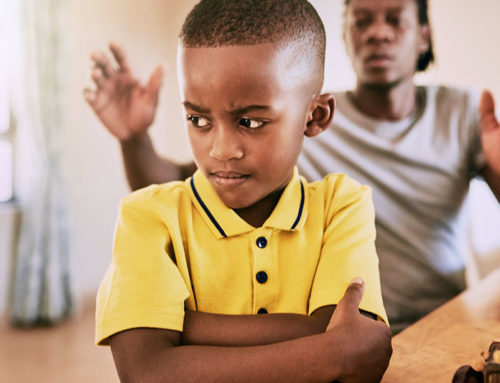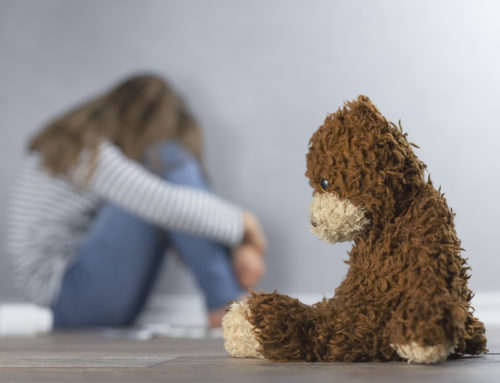By Tom McSheehy MSW, LSW
Trauma has been become a worldwide crisis that is having a profound effect on students’ behavior, attention, and academic performance. Trauma was a huge issue before the pandemic, and now it is an even more prevalent issue impacting so many children and teenagers throughout the world. If you take into consideration the violence, school shootings, and the lack of mental health services for young people, you can understand why we have a major mental health crisis in the world.
Many students who have experienced trauma are dealing with traumatic stress or Post Traumatic Stress Disorder ( PTSD) and have not been diagnosed and aren’t receiving the proper therapy and support to heal the trauma. To make matters worse, the majority of doctors and pediatricians aren’t trained in recognizing the symptoms of developmental trauma and often prescribe medication to address anxiety, attention, or hyperactivity issues without referring them for a consultation with a trauma trained therapist.
Many students are reprimanded and even punished for behavior that is related to coping with the uncomfortable bodily sensations and emotions resulting from trauma or PTSD.
It is so important that teachers become trauma informed by learning about trauma and PTSD. This knowledge will help teachers to recognize students who might be struggling with trauma and learn techniques that will help their traumatized students to feel safe and be able to focus and learn.
There are two different types of trauma:
- Single incident trauma like a car accident or medical procedure. This type of trauma can be easier to heal.
- Trauma that takes place repeatedly over time. For children, exposure to neglect, abuse, or violence over time is called developmental trauma or complex trauma. This type of trauma can be difficult to heal and can profoundly affect the healthy development of the brain and nervous system. Developmental trauma can turn into PTSD unless early intervention and support takes place.
The classroom is a powerful place to positively or negatively affect mental health and traumatized students. There are many actions that teachers can do in the classroom that can trigger traumatized students and cause them to act out or space out or collapse and withdraw.
What It’s Like to Live With Trauma / PTSD?
What is it like to live with trauma / PTSD? Having experienced trauma as a child and lived with PTSD during my childhood and some of my adult years, I know how scary and challenging it is to live with the symptoms of PTSD. It is actually the most difficult thing that I have ever experienced during my life. The simplest way to describe the experience is to say that my body felt like it was going to die at any moment even when things were OK in the moment.
Traumatized students often have tight muscles and physical health issues. Our bodies remember everything that happens to them even if our brains can’t remember. Trauma can be stored and stuck in the body where it can negatively affect mental and physical health. The emotional pain of traumatized students can show up as physical pain even though medical tests show no structural issues with their bodies. Episodes of being physically sick and very tired are common because traumatized students are often hyper vigilant to potential or perceived danger, and it can be challenging to just relax and be at ease.
Traumatized students can exhibit a variety of symptoms in the classroom. It can be helpful to learn about these symptoms so you notice students who are dealing with impact of trauma and refer them to the school counselor for extra support. Here are some of the common symptoms.
Common Symptoms of Trauma / PTSD
- Anxiety
- Aggression
- Attention issues
- Hyper vigilance to danger
- Attention lapses
- Low frustration threshold
- Threatened by unexpected information
- Constantly interpreting teacher’s mood
- Deficits in expressive and receptive language
- Hyper arousal / hypo arousal
- Daydreaming or spacing out
- Sleep issues, often tired in class
- Re-experiencing of a very scary event (flashbacks, bad dreams, fearful thoughts)
- Avoiding places that remind the person of the event
- Intrusive memories and thoughts
- Hyper arousal—easily startled
- Reactive—easily angered
- Interference with cognitive functions (attention, memory)
- Mood issues—constant negative thoughts about oneself and the world
- Dissociation—“Spacing Out”
- Numbness
- Physical pain or issues
The symptoms of trauma / PTSD can show up right away after a traumatic event or experience or the symptoms might not show up for years later.
Causes of Trauma
Adverse Childhood Experiences (ACES) are experiences that happen to children and teenagers that can be potentially traumatic to them. Research has shown a strong connection between experiencing ACES and the development of physical and mental health issues later in life.
There are a variety of causes of students’ trauma / PTSD. Here are some of them:
- Physical or sexual abuse or an incident of severe neglect
- Severe acts of emotional or psychological abuse
- Witnessing harm to others
- Natural disasters—earthquakes, hurricanes, etc.
- Human-caused events—war, terrorism
- Acts of community or domestic violence
- The sudden death of a loved one
- Serious and prolonged illness
- Ongoing and prolonged physical pain
- Poverty
- Living amongst high levels of crime and violence
- Exposure to drug and alcohol abuse
- Exposure to others with mental illness
- Having a developmental disability or living with others with such disabilities.
Triggers of Trauma
It is very important to learn about the behaviors or situations in a classroom that can trigger traumatized students into the protective, survival response of acting out or shutting down. If students get triggered in a survival response, they will have difficulty focusing and learning.
- Coercive practices
- Chaos
- Loudly disruptive behavior
- Punishment
- Shame / guilt
- Overstimulating environment
- Inconsistency
- Extreme quiet / stillness
- Being stuck or not able to move
- Paying attention to body sensations or emotions
You might look at the list and feel that trauma informed teaching will confine or restrict your ability to teach. I know that your effort at minimizing these behaviors and situations in a classroom would be good for all students and their ability to focus, sit still, and learn.
The Brain, the Nervous System, and Trauma
Our brain and nervous system always have two choices: protect or connect. If we feel threatened, we will protect ourselves. If we feel physically and emotionally safe, we will connect with ourselves and then with others.
When our bodies and brains perceive that we are in a life-threatening situation, they will automatically try to protect us by getting us to fight or move away. If those actions don’t work, our bodies and brains will then cause us to collapse and give up as a way to protect ourselves and help us survive the threat.
These protective responses are natural instincts and happen automatically. A threat could be a math test, a bully, a teacher, a punishment, gossip, or even a whole classroom.
When children experience adverse childhood experiences (ACES), it can cause major changes in the social emotional brain structures that can make traumatized children more easily triggered into the survival response by any small threat.
There is a critical brain structure called the amygdala. It is almond shaped, and there is one on each side of the brain. It is part of the limbic system or emotional center. It is our threat protection system, sort of like a fire alarm. It is responsible for setting into action the fight/flight system when we feel threatened, and it floods our body with adrenaline and cortisol.
Children who have been through trauma can have very sensitive amygdalae and can react to the slightest sense of fear with heightened arousal. Children who gone through ACES can have enlarged amygdalae which makes them extremely sensitive to any type of perceived threat, whether large or small.
Too much cortisol slows the development of the hippocampus, which is our emotional memory and is located right next to the amygdala.
Let’s quickly review some brain information that relates to trauma. Our brains evolved over millions of years: reptiles to mammals to humans. We have three main social emotional parts in our brains. The two lowest levels of the brain are the brain stem and limbic system. These are the most primitive parts of our brain and have a profound influence on our lives and are connected to trauma.
The brain stem is called the reptilian part of the brain, and it’s our survival center… imagine the energy of T Rex.
Right above the brain stem is the limbic system, the mammalian part of the brain…imagine the energy of a German Shepherd: loving and playful at times, but when threatened, it can become fierce and aggressive.
These two parts of our brains are profoundly affected by trauma. So it is critical for students to learn about these areas of the brain and how to manage and harness the uncomfortable, survival energy when experiencing a threatening situation. This knowledge gives students a sense of understanding and control in terms of what goes on inside their bodies.
The frontal cortex can calm the amygdala and stop it from hijacking the brain into protective survival mode of fighting or fleeing or eventually shutting down and spacing out. This is why it is so important that social emotional learning (SEL) be taught in schools and homes on a daily basis. SEL teaches young people to self-reflect and become aware of when they are feeling threatened and know how to calm themselves so their brains and nervous systems don’t go into a flight / fight or freeze response.
The social emotional brain begins developing in utero and drastically grows and develops in the first 3 years of life. This is a critical time period for parents, caregivers, and teachers to give the social emotional support and nurturing that the brain requires in order to develop optimally. Developing a safe and secure attachment early in life can provide protection from the negative effects of going through a traumatic experience.
Coping Strategies
There are healthy and unhealthy ways to support the brain and nervous system when they are triggered by a threatening situation. When we are young, we develop the capacity and skills to manage intense, survival sensations and emotions through the connection and modeling of adults who are able to self-regulate and calm themselves when threatened or scared. If we don’t have secure and safe connections with warm, caring adults, we might develop unhealthy ways to manage uncomfortable sensations and emotions connected to trauma / PTSD.
In-School and Out of School Behaviors
- Twisting something like hair, socks, etc.
- Daydreaming, fantasying, spacing out
- Moving around, fidgeting
- Clingy, insecure
- Trying to connect with someone by talking
- Distracting oneself by acting out or talking
- Joking around
- Being overly intellectual
- Hyperactivity, constant fast movement
- Isolating, hesitant to connect with classmates
- Worrying, overthinking
- Hesitant to make a decision
- Eating
- Alcohol, drugs, or painkillers
- TV or video games
- Social media or smart phone usage
- Shopping
- Sex
- Sleeping
- Isolating
Students who are dealing with PTSD have difficulty being in their bodies and feeling sensations and emotions. Feeling bodily sensations and emotions can trigger memories of the traumatic experience(s) which can be feel life threatening and terrifying. These traumatized students will do anything to get out of their bodies to avoid the terrifying sensations and emotions by constantly moving or by excessive daydreaming or spacing out. Many of the behaviors for which students are reprimanded or punished are unconscious and automatic responses to survival and stress. Students’ brains and nervous systems are trying their best to keep them safe and protected from perceived threats.
Because traumatized students can have difficulty focusing, paying attention, and sitting still, they can be mislabeled as ADD or ADHD and put on medications. Traumatized students can also be labeled with some type of learning disability or issue. This is why it is so important that educators learn about trauma so they can refer students to be screened for trauma / PTSD. If possible, we always want to try to address the root causes of any mental or physical health issues.
The United States Has a History of Trauma
Most American citizens have ancestors who came to this country to get away from some type of trauma in their home countries. These immigrants came to this country dealing with symptoms of trauma which affected their behavior and attitudes. The negative effects of trauma get passed along unintentionally and unconsciously from generation to generation through behavior, words, and genes.
Many teachers have trauma histories of they own, and they might not know about their trauma histories and how they are affecting them. These traumatized teachers can get triggered by the behavior of traumatized students. This is why it is critical that teachers receive ongoing support for teaching SEL in the classroom. The process of teaching SEL can be triggering because SEL invites and encourages people to feel sensations and emotions. It is very important to always go very slowly and titrate in sensations and emotions for brief moments. In a safe and supportive environment, students and teachers can learn to slowly get back in their bodies and feel again without being triggered into a survival mode.
What Can Be Done
There is a lot that can be done in schools to support traumatized students and teachers to not only cope with the symptoms of trauma, but also to lessen the symptoms or maybe even heal them. Teaching and practicing Social Emotional Learning (SEL) in classrooms on a daily basis can be helpful for traumatized students and teachers. Along with implementing SEL on a daily basis, it is very important that teachers and administrators learn about trauma and about how to create a trauma informed classroom.
It is critical that teachers and schools become trauma sensitive / trauma informed school. Teachers who receive ongoing training in SEL and trauma can set up a classroom that is emotionally safe for students and for themselves. It is so essential for traumatized students and teachers to have safe environments in which they can be themselves and share with honesty, vulnerability and authenticity. Creating safe environments helps traumatized students to step out of their protective, survival responses and connect with other students and teachers and receive empathy and support from them.
It is essential to teach students about their brain and nervous systems and how they function in response to trauma. This will help to lessen the shame and confusion that accompanies trauma and its symptoms. When students learn how the brain and nervous system function to protect themselves when they feel scared and unsafe from a threatening situation, they will understand that intense sensations and emotions are a normal part of trauma and just automatic, biological responses to perceived threats.
Medication can be helpful in coping with mental health issues resulting from trauma / PTSD. It shouldn’t be the only form of support and treatment. Traumatized students and teachers might also need trauma based therapy from a trauma trained social worker / therapist in school or out of the school.
Unfortunately, the pandemic has created a huge mental health crisis of anxiety, depression, and suicidal ideation and there isn’t enough mental health professionals available to see all these students and teachers individually. SEL in classrooms can teach traumatized students and teachers the skills and support to manage the intense sensations and emotions more effectively and feel less alone.
As I mentioned earlier, traumatized students had to escape their bodies when they went through their traumatic experiences and were overwhelmed with the terrifying sensations and emotions that felt like death. By not being in their bodies, they could protect themselves from the uncomfortable sensations and emotions.
In order to live healthy lives, traumatized students need the support and help in getting back in their bodies very slowly and deliberately over time so they can begin to feel again. Feeling sensations and emotions is essential for living fulfilling lives and allows us to connect deeply with ourselves and other people.
It is so much easier to heal trauma when a person is young and their brain is developing. If a student is not supported in healing their trauma, the symptoms can get worse as they age, and it can be more much costly, time consuming, and challenging to heal childhood trauma as an adult.
SEL instruction in class on a daily basis can be very helpful for traumatized students. It can give them some tools to deal with the uncomfortable symptoms of trauma and create safe, emotional connections between students and teachers. It is important to always go slowly with inviting students to identify sensations and emotions and to focus on their bodies. Feeling bodily sensations and emotions can be triggering of old traumatic memories and sensations. You just want to take brief moments of feeling sensations and emotions and then do some type of movement or thinking activity to switch their attention away from their bodies. With frequent, brief moments throughout a school day of feeling sensations and emotions, traumatized students will begin to slowly and safely over time dissipate the trauma that is stored in their bodies and to develop a window of tolerance for the sensations and emotions connected to trauma.
You will know that your students are triggered and overwhelmed by the SEL classroom activities (focusing on their body sensations and emotions) because they will be get more fidgety and restless or more passive and spacey. This is the nervous system trying to protect the students from old, threatening memories or experiences.
Caring, empathetic connection with adults is so important to help students to feel safe with being in their bodies and with feeling and tolerating what is going on in their bodies.
Fidget toys can be very comforting and helpful for traumatized students so they can move the excessive energy out of their bodies. When I was scared as a young boy, I would twist my hair and my socks. You can buy objects for your students to twist, squeeze, and touch as a way to move and regulate their energy and to comfort themselves. You might consider setting up a calming center or space in your classroom and allow students to go there to calm themselves.
The Arts (art, dance, music) can be very supportive for traumatized students and give them a chance to express without words what they are feeling. The movement of PE can also be a healthy way to move energy and distract the brain. Yoga can help traumatized students to feel good and calm and ground themselves when scared.
Not all students who go through traumatic experiences will develop symptoms related to trauma or PTSD. Research has shown that empathetic adults who care and support children and teenagers through the trauma and provide warm connection and conversation can buffer and protect young people from developing symptoms of trauma.
Highly sensitive students feel and sense deeply and can be more profoundly affected by childhood trauma. To learn more about highly sensitive children, see my blog The Hijacking of the American Brain into Acts of Violence: What Can Teachers and Parent Do to Help with School Violence Prevention?
Students who experience trauma and developmental trauma resulting in PTSD are more susceptible to suicide. It is very easy to get stuck in anxiety and depression resulting from trauma and then isolate. The combination of anxiety, depression, and isolation has caused young people to attempt and at times, succeed, in taking their lives. To learn more about suicide, see my 3-part blog series on, Why Teenagers Commit Suicide.
Being stuck in a terrifying and threatening situation and not able to move away from it is what can cause the symptoms of trauma / PTSD to develop. When animals in the wild go through a scary and life-threatening situation, they will shake afterwards to dissipate all the pent up sensations and emotions stored in the body from the terrifying experience. This helps the animal not store intense emotions in their bodies.
It is very important to allow traumatized students to walk or move in some way in the classroom if they are triggered and feeling stuck or overwhelmed with sensations or emotions.
Undiagnosed and untreated single incident trauma, developmental trauma, and historical trauma are causing profound effects on students’ ability to focus, sit still, and learn up to their fullest potential. Many traumatized students are labeled as ADD, ADHD, Learning Disabled, Oppositional Defiant Disorder, or as a challenging student when they are just exhibiting normal symptoms of trauma and are not able to regulate the sensations and emotions related to trauma. It’s time to implement SEL into all classrooms on a daily basis and to educate and train teachers in how to create trauma informed classrooms. The mental and physical health of our children and teenagers are depending on teachers and administrators to make this happen.
If you would like to have a trauma informed training and / or to stay connected to my social emotional work with teachers, parents, and coaches, click the link below and let me know that you want to receive my Teaching Heart Institute newsletter.
https://teachingheartinstitute.com/contact-tom/
Tom McSheehy, MSW, LSW, taught elementary and middle school for 21 years and has been a licensed social worker for 26 years. Tom is a trauma trained family therapist and an EMDR trained therapist who has been working in the area of social emotional learning (SEL) for 36 years.





